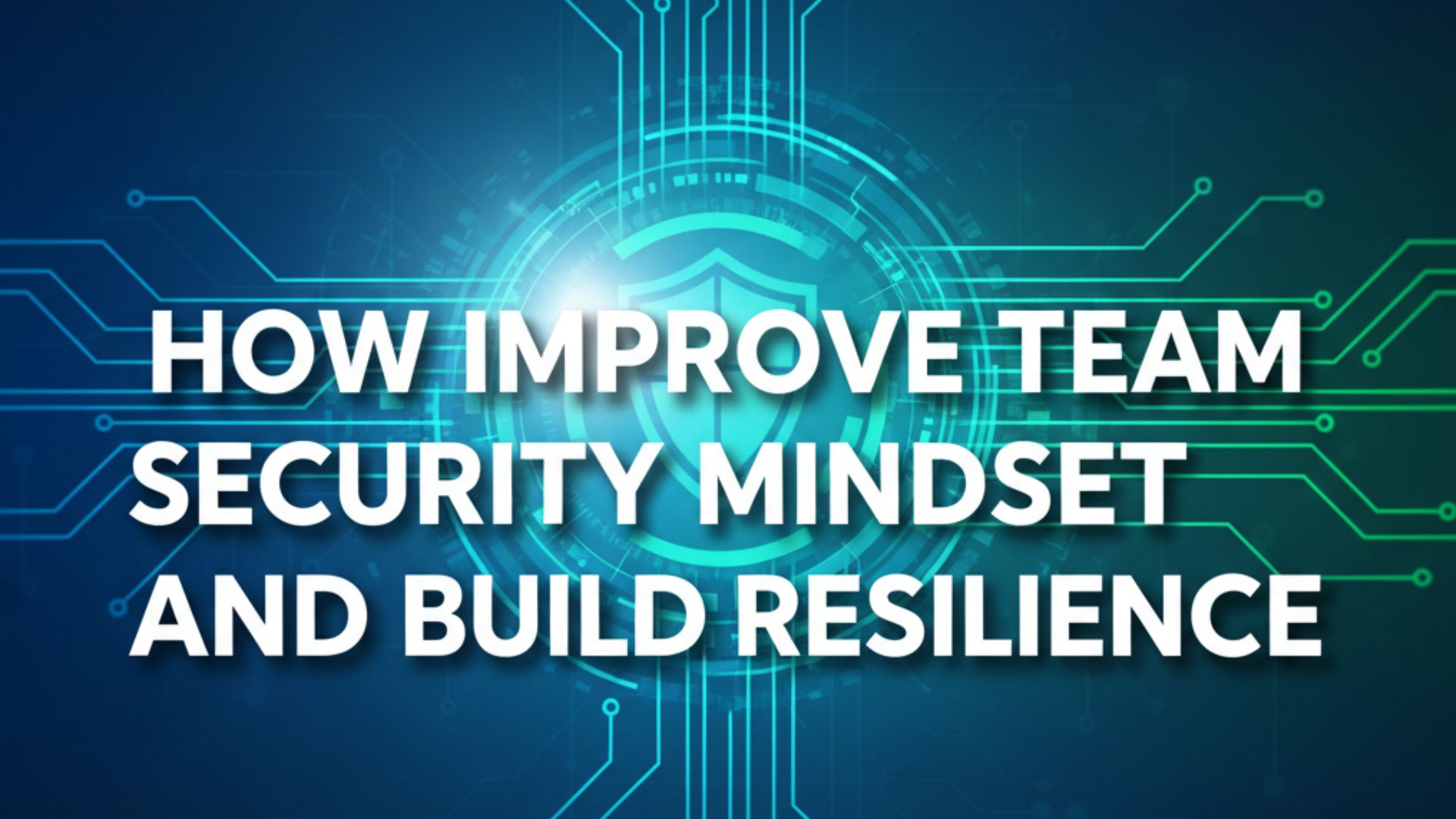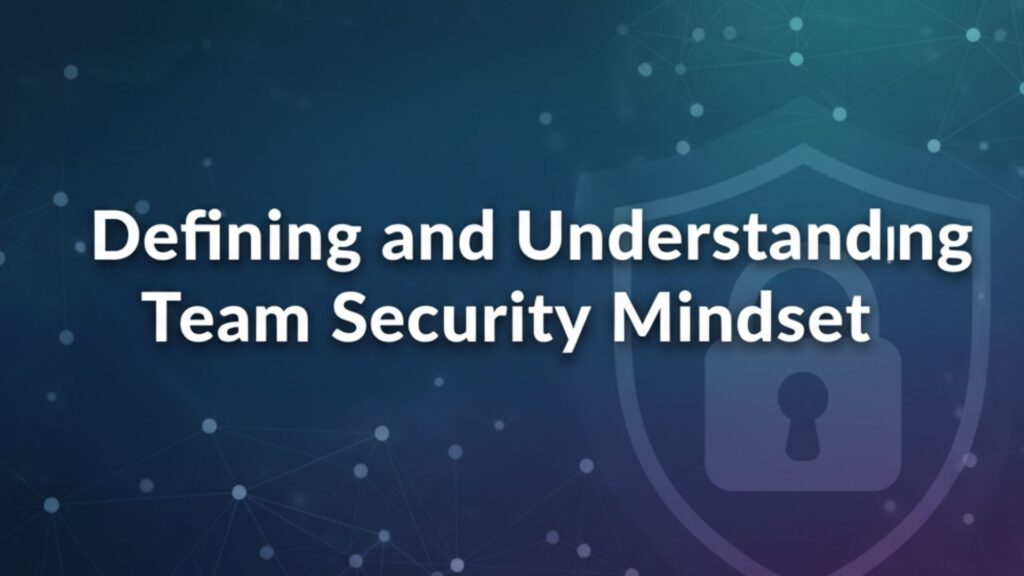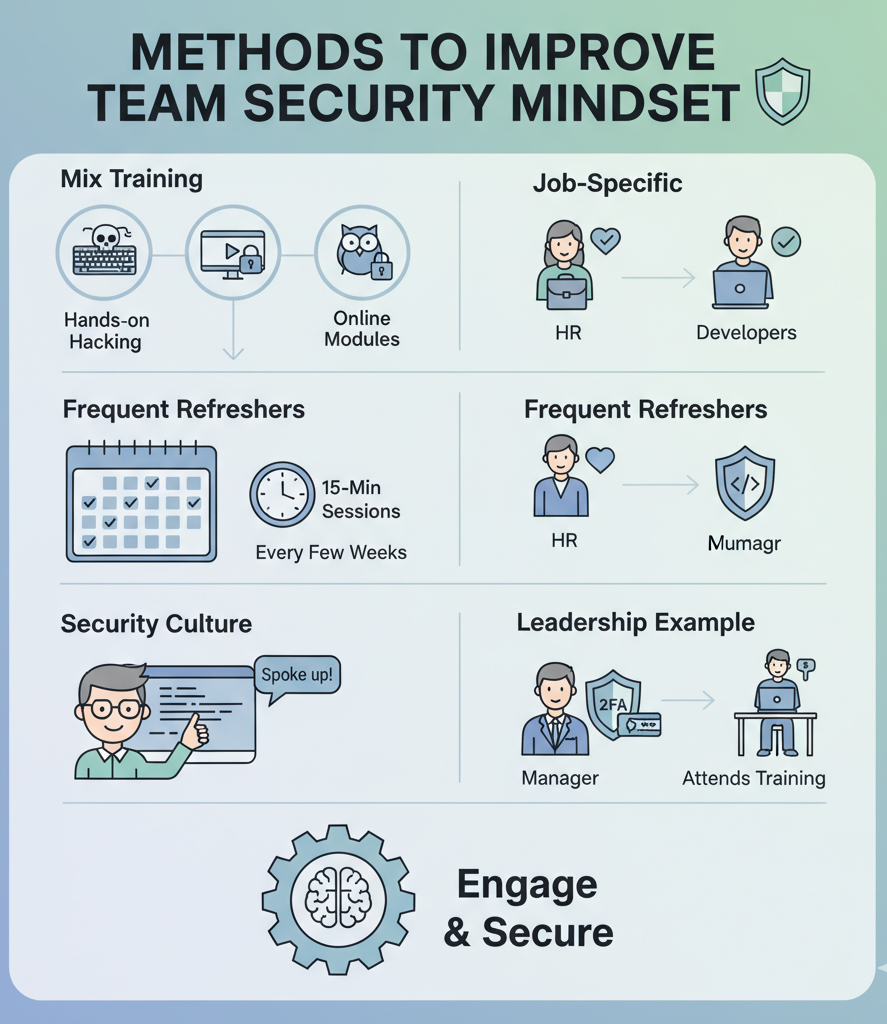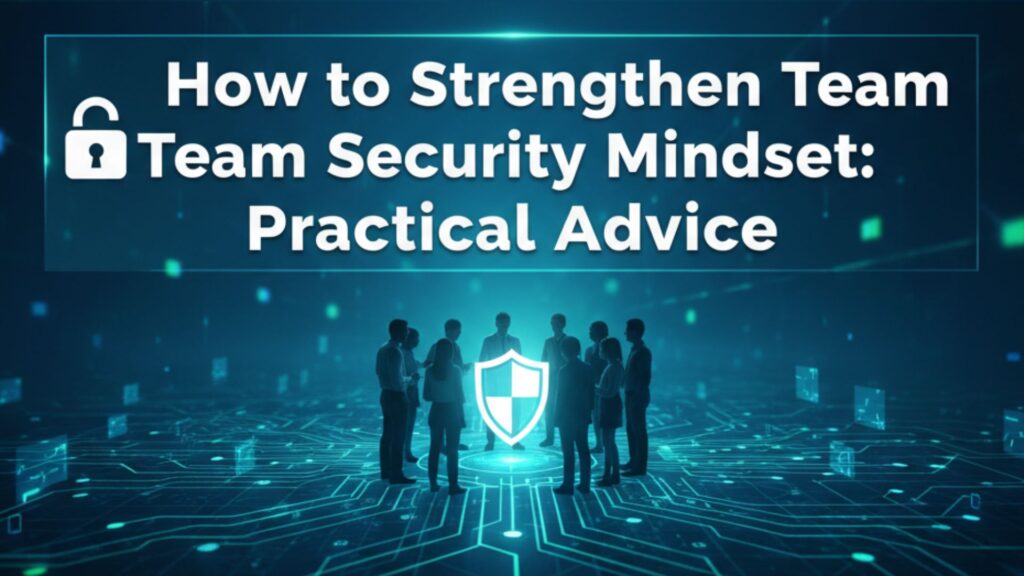
Teams mess up security when they treat it like a dull rulebook instead of a daily habit. We’ve watched countless developers rush through security steps just to say they did them – that’s asking for trouble. It’s actually pretty simple: catch problems early, train regularly, and get everyone thinking about risks (not just the security folks).
Our bootcamp instructors noticed something interesting – teams who talk openly about close calls and lessons learned tend to have way fewer incidents. And when leadership actually shows up to training sessions? That sends a real message.
Want to see how your team stacks up against others who’ve turned their security around? Keep reading.
Key Takeaway
- Scanning for risks beats scrambling after problems hit.
- Security training’s got to match what people actually do.
- When bosses walk the walk on security, teams follow.
Defining and Understanding Team Security Mindset

Most folks get this wrong – they think security’s all about rules and checklists. Through five years of running dev bootcamps, we’ve seen teams drag their feet on security like it’s some kind of punishment. That’s not gonna cut it anymore.
Look, security isn’t some magic shield. It’s about spotting trouble before it hits and knowing what to do when stuff goes sideways. We’ve coached hundreds of teams, and the ones who get it right are always thinking three steps ahead.[1]
Here’s what makes the difference:
- Teams catch problems while they’re still small
- Everyone knows why they’re doing security checks, not just how
- Nobody’s afraid to speak up about weird stuff they notice
When teams stop treating security like homework and start seeing it as cultivating a security mindset, that’s when things click. And you know what? Our most successful graduates are the ones who figured this out early.
Methods to Improve Team Security Mindset

Man, security training used to bore people to tears. But we finally cracked it after watching hundreds of teams struggle. Mix it up – that’s the secret. Some days we run hands-on workshops where developers actually hack their own code (safely, of course). Other times, they’re working through online modules at 3 AM because that’s when they focus best.
- Live hacking demos that actually keep people awake
- Self-paced stuff for the night owls
- Job-specific training (because HR doesn’t need to learn penetration testing)
- Quick 15-minute refreshers every few weeks
Nobody’s got time for day-long seminars anymore. We’ve found that dropping small lessons here and there sticks better. It’s like learning a language – you need regular practice, not one massive cram session.
The whole “security culture” thing sounds pretty fuzzy, right? But here’s what it looks like in real life: Last month, one of our junior devs spotted something fishy in some third-party code. That junior dev speaking up wasn’t luck, it’s one of the characteristics of a security mindset we see in teams that actually build lasting security habits.
Instead of staying quiet, they brought it up immediately. Why? Because they knew nobody would blame them for causing delays. That’s what a good security culture looks like.
Leaders can’t just talk about security – they’ve got to live it. The teams that really nail this stuff? Their managers use password managers, enable 2FA, and actually show up to training sessions. Nothing kills security motivation faster than a boss who ignores their own rules.
Communication and Reinforcement Strategies
These security policies don’t have to read like legal documents. After running hundreds of bootcamps, we’ve learned to keep it simple: “Here’s what could go wrong, here’s how to prevent it, here’s what to do if you spot trouble.” No fancy words, just straight talk.
The blame game doesn’t work – period. Our most successful teams created anonymous reporting channels. They celebrate people who speak up about mistakes or close calls.[2] One team even started a monthly “lesson learned” lunch where they break down recent incidents over pizza.
Regular updates matter more than most people think. We send out weekly tips that actually get read (probably because we include real stories and skip the corporate speak). Teams share war stories about the phishing emails they caught or the weird attachments they didn’t open.
And yeah, sometimes we bribe people with coffee gift cards for spotting security issues. Hey, whatever works – we’re not proud. The point is making security part of everyday conversation, not some special occasion thing.
Measuring, Tools, and Behavioral Insights
Credit: Delinea
Numbers don’t lie – that’s what we keep telling teams who think they’re “doing fine” with security. But measuring this stuff isn’t as simple as counting bugs. Through running our bootcamps, we’ve seen teams transform when they start tracking the right things. Response times dropped from days to hours once people saw the actual data.
The really cool part? Modern tools make this way less painful than it used to be. Our developers actually look forward to security scans now (weird, right?). They’ve turned it into a competition – who can write the cleanest code, who catches the most vulnerabilities before they hit production.
But here’s what nobody talks about: all the psychology behind security habits. Teams often think they’re ‘doing fine’ just because audits look clean, but security mindset vs compliance shows why checking boxes isn’t enough. It’s not about forcing rules down people’s throats. It’s about making security make sense.
How to Strengthen Team Security Mindset: Practical Advice

- Quick morning stand-ups to share security updates
- Monthly deep-dives into recent incidents
- Role-specific cheat sheets that people actually use
- Recognition program for catching vulnerabilities early
Look, we’ve trained thousands of developers, and the ones who get it right aren’t necessarily the smartest – they’re the most consistent. They build security checks into their daily routine, like brushing their teeth. No heroics, just steady habits.
The teams crushing it right now didn’t get there overnight. They started small – fixing one behavior at a time. Our most successful graduates still send us screenshots when they catch suspicious activity, proud as parents showing off their kids’ drawings.
Security’s not about perfect scores – it’s about progress. Every team slips up sometimes. The good ones learn from it, adjust, and keep moving forward. And yeah, sometimes that means buying pizza for the team that caught a major vulnerability before it went live. Whatever works, right?
Final Thoughts on How Improve Team Security Mindset
Security isn’t some dusty handbook sitting on a shelf, it’s what your team breathes every day. And it’s more than just clicking through those yearly training slides – teams need to feel it in their gut. The good ones know this.
They spot problems before they blow up, they’re not afraid to speak up when something’s off, and their bosses back them up 100%. When everyone’s on board (from interns to C-suite), you’re looking at fewer breaches, better trust. Start with a five-minute chat about what security means to your people. Build from there.
Ready to take the next step? Join the Security Mindset Bootcamp and start building resilience today.
FAQ
How can cybersecurity awareness, phishing awareness, and insider threat awareness help build a stronger security mindset in a team?
Good habits start with knowing the risks. Teaching cybersecurity awareness, phishing awareness, and insider threat awareness helps a team spot shady emails, odd behavior, or sneaky tricks. These lessons build a natural security mindset, where people think before clicking or sharing.
A team that understands everyday threats is less likely to get fooled and more likely to speak up when something feels off. That simple awareness creates trust, lowers risks, and makes the whole group sharper when facing new challenges online or at work.
What role do cyber hygiene, password security, and multi-factor authentication play in improving security culture and protecting data?
Cyber hygiene is like brushing your teeth, small daily steps that stop big problems. Strong password security and using multi-factor authentication are part of that routine. When everyone takes these steps, the team builds a reliable security culture that puts data protection first.
Even simple habits, like updating passwords or locking screens, send a clear message: we all take care of the shared system. Over time, these behaviors stick and keep private information safer against cyber threats that grow more clever every year.
Why are risk management, vulnerability management, and incident response key to building cyber resilience and a lasting security mindset?
Risk management, vulnerability management, and incident response all shape how a team bounces back from trouble. A strong security mindset means spotting weak spots before hackers do, fixing gaps with steady patching, and having clear plans ready when things break.
These actions form the heart of cyber resilience. The goal isn’t just to prevent every attack but to learn, adapt, and respond fast. When teams practice these steps often, they grow more confident, protect each other better, and recover faster after setbacks.
How do security training, compliance training, and security awareness programs support organizational security mindset and improve user education?
Training works best when it’s more than boring slides. Security training, compliance training, and well-built security awareness programs give people real stories, simple steps, and reminders they can use right away. These efforts strengthen the organizational security mindset by teaching user education that sticks.
Instead of fear, the focus is on responsibility and teamwork. When employees know what’s expected and why it matters, they act with more care. The whole group learns to see threats sooner and handle them without panic.
How can security leadership, security governance, and security accountability encourage security culture transformation and better security mindset development?
Leaders shape the mood of the team. Security leadership, backed by solid security governance, sets the rules and shows that safety is a shared priority. When people see security accountability at the top, they follow.
This sparks security culture transformation, where protection becomes part of daily work rather than an afterthought. Security mindset development grows faster when managers listen, guide, and admit mistakes too. A clear tone from leaders helps everyone understand their role and commit to better habits together.
References
- https://www.mdpi.com/2071-1050/8/7/638
- https://en.wikipedia.org/wiki/Internet_Security_Awareness_Training

